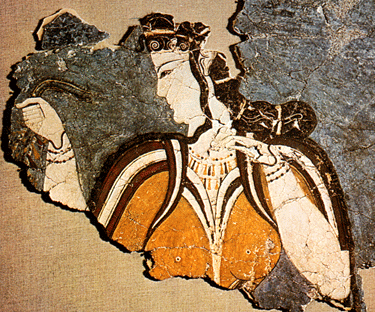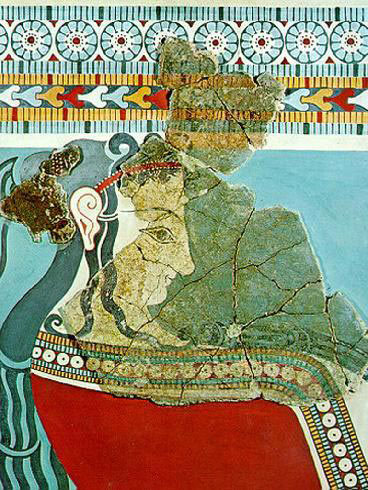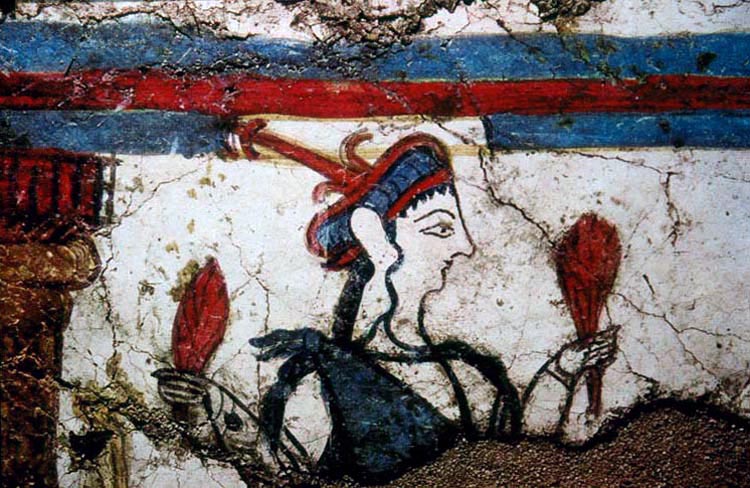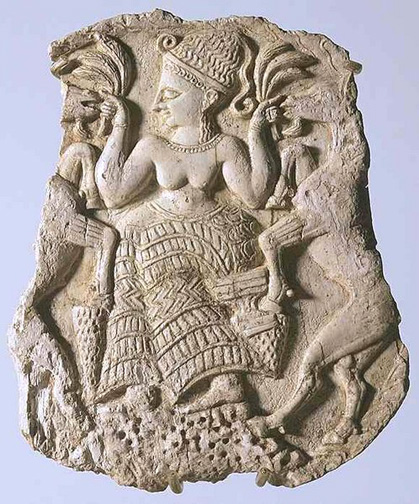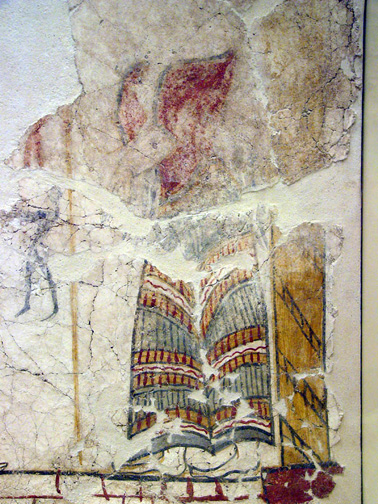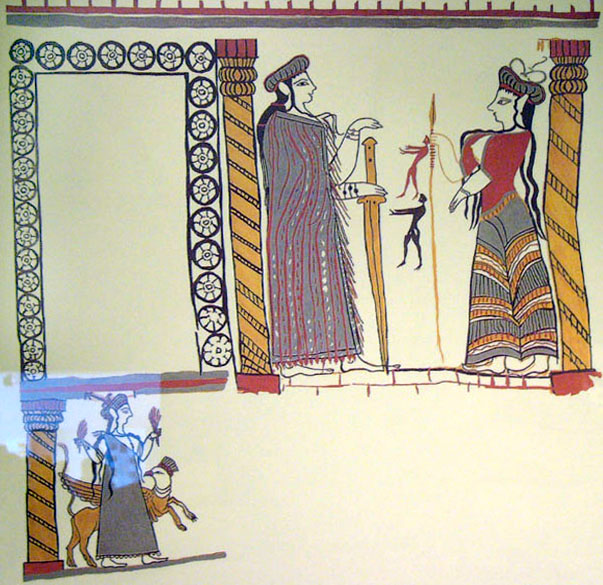Frescos from Mycenae
with strong Cretan influence
Is that a serpent in her hand?
A large-breasted woman walks with offering.
Here the artistry is drifting from the expert Cretan style, but women's
ceremony remains the central theme of the Mycenaean frescos.
A griffin romps beside this goddess (scroll down to last panel).
Note the similarity of this goddes to the Syrian goddess in next pane.
This 13th-century ivory goddess from Minet-el Beida in northwest Syria is heavily influenced by Cretan art: her coiffure with curling tresses, flounced skirts, and the sheafs in both hands, as at Mycenae (above). The goddess even stands on a mountain as in Cretan seals. But the rampant goats are a west Asian theme that was adopted into Aegean art by way of Cyprus. The great Ugaritic goddess venerated in these parts was Athirat (Asherah in Hebrew), qaniyatu elima: progenitrix of the gods.
A partially effaced woman in Cretan dress stands with a staff in her outstretched hand.
A reconstructed view of frescos shown above, with a third figure holding a sword, point down. Two small male figures hover between the large females. The priestess or goddess at bottom left wears the same headdress as the one at upper right.
A griffin gambols beside her.
